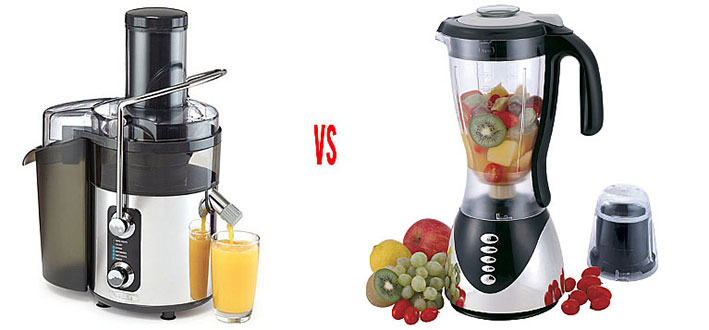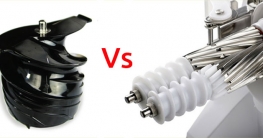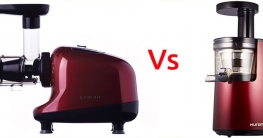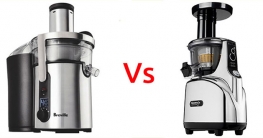Juicer Machine vs Juice Blender – Which Should You Use to Juice?

If you are new to juicing, you would have probably asked yourself the question of juicer machine vs juice blender. If both seem like they can do the job of making fruit and vegetable juice, so why choose one over the other? Is there an advantage of using juicer machines over juice blenders?
How a juicer machine works
There are varied varieties of juicer machines and are generally divided into three types – centrifugal juicer, masticating and triturating juicers. Centrifugal juicers have blades that beat the juice out of the fruit and then sieve it into a container. On the other hand, masticating juicers crush the fruit pulp and then suck out the juice. While a triturating juicer uses double gears to press the fruit to release the juice out of it. The price of juicer machines vary from cheap to expensive based on the features and whether it is for home or commercial purposes.
How a juice blender works
Juice blenders on the other hand are typically used in kitchens. It consists of a jar-like container that is usually plastic or glass which holds together the food to be blended. It is covered with a lid on top so as to prevent food particles from sprinkling out while blending. The jar is is fitted on to a base that holds the blades which are connected to a small motor that is electrically powered. A juicer blender usually has three or four speed controls that determine the speed at which the blades will rotate. They’re not expensive at all – you can get a decent one for as little as $20. Juice blenders are used for creating smoothies, soups or your favorite shakes. You are able to make instant purees, cut fruits and veggies; use them for producing dressings including crushed ice.
Juicer machine vs Juice blender
In what way is a juicer machine different from a juice blender? The major difference between the two appliances is that a juice blender will only cut food into smaller finer particles usually to be mixed with another food, liquid or even juice. Whereas a juicer machine will squeeze juice out of the pulp of a fruit. Therefore there will be a marked presence of fiber in blended juice when compared to the fine liquid of juice produced by a juicer machine.
But if something contains fiber, which smoothies and blended soups do, then it isn’t offering the benefits that juicing purportedly will. Juicing allows you to ingest more vitamins and nutrients than eating or blending vegetables. Whether chewed or blended, the vegetable still has fiber, which the body uses up energy to process. Juice passes through the body quickly. In addition, while you may be able to eat or blend four carrots, you can easily drink 12 carrots’ worth of juice. That means your body is getting three times more nutrients and vitamins from juicing. In addition, blending will cause more oxidation and loss of nutrients (because of the fast spinning blades) while juicing (with a proper non-centrifugal juicer) should keep the nutrients intact. Juicing is an excellent way of increasing the amount of vegetable servings you consume a day without ingesting too much fiber.
Personally, we enjoy both – we don’t get into juicer machine vs juicer blender question and if finances allow, we would buy both. For instance, even if you have a top of the line blender, carrots are just better off being juiced. And sometimes you just want a nice refreshing glass of apple juice without all the smoothieness. We also enjoy blending when we’re hungrier. Plus, variety is the spice of life.
Disclosure – Any/all of the links on primejuicer.com are affiliate links from which we receive a small commission from sales of certain items.


